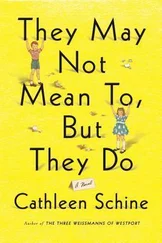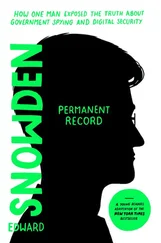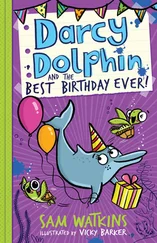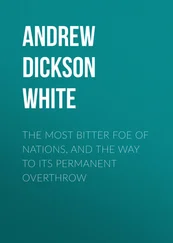Another example is word repetition, as in a sentence like The last person to leave the room should examine the room for any possessions that were left behind. If you’ve made your ear into a fine instrument, it will hear that second room as making a sound akin to fingernails on a chalkboard.
I talk a lot about “not-bad” writing. Another term for this is the middle style ; sometimes it’s claimed to be “transparent” prose. That’s because it’s clear, precise, and concise and doesn’t call attention to itself, for good or ill. William Hazlitt gave it some other names, and a good characterization, back in 1821: “To write a genuine familiar or truly English style, is to write as any one would speak in common conversation, who had a thorough command and choice of words, or who could discourse with ease, force, and perspicuity.” If you’ve ever seen a transcript of actual conversation, you know that you don’t want to write exactly like that; too many false starts, too many um s, ya know s, and like s. Yet as Hazlitt recognized, not-bad writing is conversational to the core and reciting your work will help you master it.
Even good writing — such as the highly literary style of a Henry James, Vladimir Nabokov, or John Updike, or the irony of a Joan Didion or Sarah Vowell — reads aloud well. The worst of academic, bureaucratic, or legal prose doesn’t; you have to take multiple breaths before you get to the end of a sentence, and the dull or vague or merely stiff wording just hits you over the head. It brings to mind what Harrison Ford supposedly said to George Lucas (always more of a visual than a word guy) on the set of Star Wars: “You can write this shit, George, but you sure can’t say it.”
A word you see a lot nowadays is mindfulness. I confess I don’t know exactly what it means; something having to do with meditation and/or yoga, I believe. But the concept can definitely, and profitably, be adapted to writing. The opposite of mindful writing is careless, unexamined, unattended-to prose: what Truman Capote may have had in mind when he said (referring to Beat Generation authors), “That isn’t writing at all, it’s typing.” Mindless writing is a data dump and one sees it far too often nowadays.
I hope I don’t sound like the “Get off my lawn!” guy too often in this book, but I’ll briefly embrace this persona for a rant about multitasking, that is, the predilection of youth (broadly defined) to do several things at once, most or all of them electronic. Much attention, research, and verbiage has been devoted to this subject, and I freely confess that I haven’t studied the accumulated wisdom and thus am not an expert. However. I am convinced that multitasking — either the act itself or a multitasking state of mind — promotes the mindless writing I am confronted with every day. Without a doubt, if you have several things going on at once, you are perfectly capable of expressing an idea along the lines of Dude, where should we eat? or OMG, did you see what she’s wearing? But anything more complicated than that — and anything you would want to write for a broader public is more complicated than that — well, it just can’t be done.
In other words, I would bet a lot of money that the student who wrote the following sentence had several other things going on:
Not only do journalists possess an undying passion to uncover and showcase relevant information to enhance the public’s knowledge on current events, but exhibit a willingness to go to great lengths to obtain stories fit to print.
It has all the telltale signs of mindless writing: wordiness, clichés, and catchphrases poorly used; subjects and verbs that don’t line up; incorrect use of words; faulty parallelism. It might not be a bad idea to copy it down and put it up on your bulletin board as an example of what not to do. And make no mistake: merely listening to music while trying to write constitutes multitasking, not to mention texting, watching TV, scanning a computer, and so forth. Any of these things takes the necessary attention away from the task at hand. So if you don’t want to write badly, don’t do them.
A big part of mindful writing is an awareness of and attentiveness to the (hypothetical or actual) person who will eventually be reading your words. Ideally, you look him or her in the eye, as it were. You note a spark of interest or a puzzled look or the glazed expression that indicates incipient boredom, and respond accordingly. Few of us are lucky enough to have a real live person ready and willing to hear our stuff. But that’s okay. Cooking a stew, you don’t need an outside opinion; you just take a taste now and again. It’s the same with writing. Reading aloud — literally or figuratively — will help you take one step away from your work and single-handedly become what Robert Graves called “the reader over your shoulder.”
So read.
PART II.How to Not Write Wrong
Note: In Parts II and III, examples of what not to do will be crossed outor [set in brackets].
A. The Elements of House Style
Which is correct, 6 PM, 6 P.M., or 6 p.m. ?
The answer is, all of them! — and I apologize for starting off this part of the book with a trick question. This is an issue of style in the sense of The AP Stylebook and MLA Style — basically, a set of rules and conventions having to do with abbreviation, capitalization, and so forth that is followed by a particular publication or organization. If your professor, company, or publication subscribes to a certain house style, follow it. If not, the most important thing is to be consistent. That is, if on page 1 you write 6 p.m. , spell out the number fifteen , and put “Gone with the Wind” in quotation marks, make sure you do things the same way all through your text.
1. NUMBERS AND ABBREVIATIONS
That said, not-bad writers tend to follow some general style guidelines. Most prominently, they try to stay away if at all possible from numerals, abbreviations, capitalization, and symbols like &, %, #, +, >, /, and @. The underlying reason for this has to do with the whole read-aloud thing. In reciting the sentence below, for example, you wouldn’t say “St.” or “Dr.”; and fourteen just reads more fluently than 14.
[ The Dr. has had his office @ #321 Livingston St. for >20 years. ]
It’s better to write it as you would say it:
The doctor has had his office at 321 Livingston Street for more than twenty years. (Street addresses are always given in numerals, hence the 321 .)
As for state names, never abbreviate when they’re four letters or less, or when they’re standing alone.
He hails from Calif . California.
It isn’t wrong or necessarily bad to abbreviate a state name when it immediately follows a city, but note that the Associated Press stopped doing this in 2010. That is, the AP now refers to Albany, New York, not Albany, N.Y.
It’s similar with months. Always spell out the months from March through July. For the rest, spell out when alone ( I was born in February ); when it’s followed by the day, abbreviation is okay, as long as you’re consistent ( I was born on Feb. 22 ).
Of course, it would look silly to spell out terms customarily given by abbreviations, initials, or acronyms — to write, that is:
[ The band played a song from its new compact disk on Mister David Letterman’s talk show, which airs on the Columbia Broadcasting System. ]
The band played a song from its new CD on David Letterman’s CBS talk show.
Читать дальше












